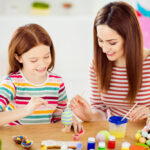Are you looking to unleash your creativity, save money, and take pride in completing projects on your own? Embracing the Do-It-Yourself (DIY) approach allows you to tackle a wide range of tasks, from home improvement projects to crafting and beyond. In this detailed blog post, we will provide you with a comprehensive guide on how to do it yourself. From planning and preparation to execution and troubleshooting, this guide will equip you with the knowledge and confidence to successfully embark on DIY projects.
How to Do It Yourself
The DIY approach empowers individuals to take control of their projects, whether it's transforming their living spaces, creating personalized crafts, or fixing everyday items. By embarking on DIY projects, you can save money, customize your creations, and experience the satisfaction of completing tasks with your own hands. This comprehensive guide will walk you through the key steps involved in successfully executing DIY projects.
The Benefits of DIY
Before diving into the practical aspects of DIY, it's important to understand the benefits it offers:
- Cost Savings: DIY projects often allow you to save money by eliminating labor costs associated with hiring professionals. By investing your time and effort, you can complete tasks at a fraction of the cost.
- Customization and Personalization: DIY projects provide the freedom to personalize your creations according to your preferences and needs. You have the flexibility to choose materials, colors, and designs that align with your unique style.
- Skill Development: Engaging in DIY projects helps you acquire new skills and expand your knowledge. From basic carpentry and painting techniques to advanced crafts and repairs, you can continuously enhance your abilities through hands-on experience.
- Sense of Accomplishment: Completing a DIY project instills a sense of pride and accomplishment. Seeing the finished product or witnessing the transformation of your space boosts confidence and motivates you to take on more challenging projects.

Planning and Preparation
A crucial step in any DIY project is effective planning and preparation. Consider the following key aspects:
- Define Your Project: Clearly define the scope and objectives of your project. Determine what you want to achieve and establish realistic expectations.
- Research and Gather Information: Conduct thorough research to understand the project requirements, techniques, and potential challenges. Utilize online resources, books, and tutorials to gather information and seek inspiration.
- Create a Detailed Plan: Develop a step-by-step plan that outlines the tasks, timeline, and necessary resources. Break down the project into manageable stages to stay organized and track progress.
- Measure and Assess: Take accurate measurements and assess the space or items involved in your project. This ensures proper planning and helps you determine the quantities of materials required.
- Set a Budget: Determine a budget for your project and allocate funds accordingly. Consider the costs of materials, tools, and any professional assistance you might need. Be realistic and allow for unexpected expenses.
Essential Tools and Materials
To successfully execute DIY projects, it's important to have the right tools and materials at your disposal. Here are some essential items to consider:
- Basic Hand Tools: Invest in a set of quality hand tools, including a hammer, screwdrivers (flathead and Phillips), pliers, wrenches, tape measure, and utility knife. These versatile tools will come in handy for a wide range of projects.
- Power Tools: Depending on the complexity of your projects, consider adding power tools to your toolbox. Start with essential tools like a drill, circular saw, jigsaw, and orbital sander. Expand your collection as you take on more advanced projects.
- Safety Equipment: Prioritize safety by investing in personal protective equipment (PPE) such as safety goggles, gloves, ear protection, and dust masks. Use appropriate safety equipment for each project to minimize the risk of accidents or injuries.
- Materials and Supplies: Purchase high-quality materials and supplies that are suitable for your specific project. This may include lumber, paint, fasteners, adhesives, electrical components, or fabric. Opting for durable materials ensures the longevity and quality of your finished project.
Step-by-Step Execution
Once you have planned and gathered the necessary tools and materials, it's time to execute your DIY project. Follow these general steps for a successful execution:
- Organize Your Workspace: Clear the area and organize your workspace before starting the project. Ensure you have sufficient space to move around and access your tools and materials easily.
- Follow Safety Guidelines: Prioritize safety throughout the project. Refer to safety guidelines specific to the tools, materials, and techniques you'll be using. Take necessary precautions to protect yourself and others involved in the project.
- Take it Step by Step: Follow your project plan and execute the tasks systematically. Take your time to complete each step accurately and with attention to detail. Rushing through the process can lead to mistakes or unsatisfactory results.
- Seek Assistance if Needed: If you encounter difficulties or reach a stage where professional expertise is required, don't hesitate to seek assistance. Some projects may involve complex tasks or require specialized knowledge that is best left to professionals.
- Embrace Flexibility and Learn from Mistakes: DIY projects can be a learning experience. Embrace the opportunity to learn and grow from any mistakes or challenges you encounter along the way. Be flexible and adjust your approach as needed to achieve the desired outcome.

Troubleshooting and Problem Solving
Even the most well-planned DIY projects may encounter unforeseen challenges. Here are some troubleshooting tips to help you overcome common issues:
- Research Solutions: If you encounter a problem, conduct research to identify potential solutions. Look for online forums, instructional videos, or expert advice that addresses similar issues.
- Consult DIY Communities: Engage with DIY communities, forums, or social media groups to seek advice from experienced DIY enthusiasts. These platforms provide a wealth of knowledge and support from individuals who have faced similar challenges.
- Evaluate and Adjust: Assess the problem objectively and consider alternative approaches. Determine if modifications or adjustments to your original plan are necessary to overcome the issue.
- Seek Professional Help if Necessary: If the problem persists or requires specialized expertise, it may be necessary to consult a professional. Recognize your limitations and prioritize safety and quality results over the desire for complete independence.
Safety Considerations
Safety should always be a top priority when engaging in DIY projects. Consider the following safety guidelines:
- Read and Follow Instructions: Familiarize yourself with the user manuals and safety instructions for tools, equipment, and materials. Adhere to recommended guidelines to prevent accidents or injuries.
- Wear Appropriate Safety Equipment: Always wear the necessary personal protective equipment (PPE) for each task. This includes safety goggles, gloves, ear protection, and masks as required.
- Work in a Well-Ventilated Area: Ensure proper ventilation in your workspace, especially when using paints, adhesives, or chemicals. Open windows or use fans to maintain a fresh airflow and minimize exposure to fumes.
- Secure and Stabilize Workpieces: When cutting or drilling, secure workpieces firmly to prevent movement or slipping. Use clamps or vices to stabilize materials and maintain control during the project.
- Use Tools Responsibly: Operate tools and equipment responsibly, following manufacturer guidelines. Ensure proper training or familiarization with the tools before use. Keep them away from children and use caution to prevent accidents.

Expert Tips for Successful DIY
To further enhance your DIY journey, consider these expert tips for successful projects:
- Start Small and Build Confidence: Begin with smaller, less complex projects to build your skills and confidence. As you gain experience and proficiency, gradually tackle more challenging endeavors.
- Measure Twice, Cut Once: Accurate measurements are crucial for successful DIY projects. Double-check your measurements before cutting materials to avoid wastage or incorrect cuts.
- Take Breaks and Pace Yourself: DIY projects can be physically and mentally demanding. Take regular breaks to rest, recharge, and maintain focus. Pace yourself to prevent fatigue or rushing through tasks.
- Document Your Progress: Document each step of your project with photographs or notes. This serves as a reference for future projects, troubleshooting, or sharing your experience with others.
- Embrace Continuous Learning: DIY is a journey of constant learning and improvement. Explore new techniques, materials, and tools. Attend workshops, watch tutorials, and experiment with different projects to expand your skills and knowledge.
Conclusion
Embarking on DIY projects offers numerous benefits, from cost savings and customization to skill development and a sense of accomplishment. By following the steps outlined in this comprehensive guide, you can confidently plan, execute, and troubleshoot various DIY projects. Remember to prioritize safety, seek assistance when needed, and embrace the learning opportunities that come with each project. Whether you're a seasoned DIY enthusiast or just starting out, the world of DIY awaits your creative endeavors.




